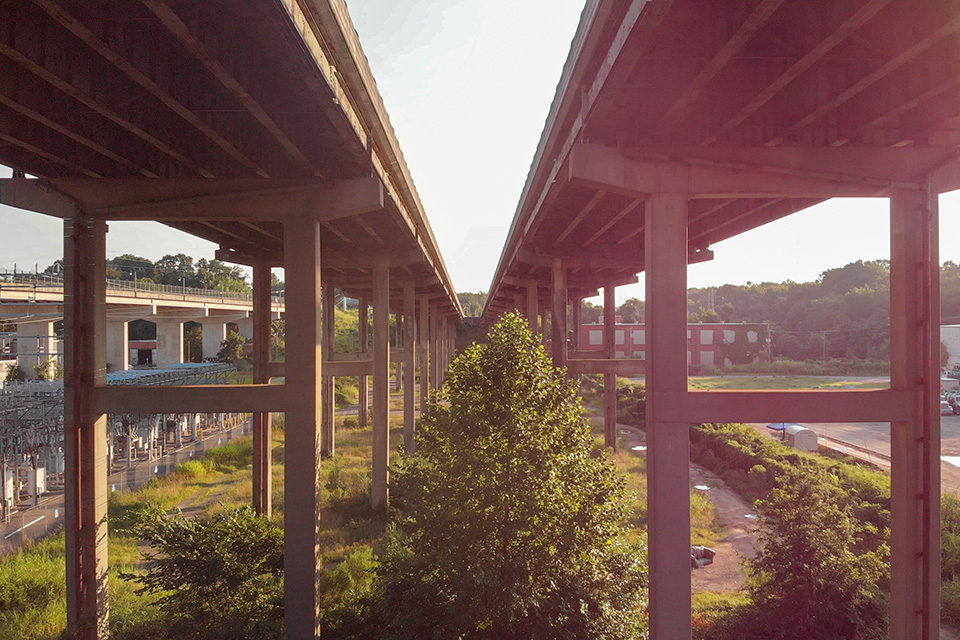Themes
Avoiding and Reversing Erasure
Erasure as a tool for establishing and advancing the dominance of one culture over another has been a tactic of war, colonization, and oppression for most of human history, and it has supported an American narrative for centuries. Consequently, our shared contemporary cultural awareness of Native peoples and enslaved African Americans, among other groups, remains largely shaped by a redacted history that obscures the violent destruction of lives, cultural traditions, and communities. Collective American interpretation of history often fails to adequately address how enslavement and forced assimilation caused traditions, histories, and other markers of identity to be lost.
 Shockoe Hill African Burying Ground, Richmond, VA. Photo by Barrett Doherty, 2021.
Shockoe Hill African Burying Ground, Richmond, VA. Photo by Barrett Doherty, 2021.
Often advocates, decision-makers, and others focus on what is extant at a site, what’s known as its material integrity, as part of their advocacy. But what happens if there is no visible material integrity? How, for example, do we advocate for and interpret a former lynching site that is now a 7-11? Or an African American Burying Ground that has been supplanted by highway overpasses, billboards, and an abandoned gas station? This is one of the great challenges facing advocates today. Our history is replete with hidden and untold stories embedded within places that have been purposefully erased. At Fort Negley Park in Nashville, TN, the Civil War fort was built by African Americans who were enslaved or fled from enslavement. By viewing the cultural landscape through a narrow lens, a complex and difficult American history is completely occluded.
Cultural landscapes have the unique ability to help us resurface eradicated, hidden, and lesser-known stories. In addition to Fort Negley, we see this in the buried history of an African American neighborhood on the grounds of the Rhode Island State House that is now being excavated, or with the Japanese American sites of internment. Without the dedication of Japanese American individuals who committed themselves to ensuring that the country would never forget, the mark that the prison camps left on our cultural landscape could have been erased. Instead, the publicly accessible sites have become sites of memory. At Bears Ears National Monument, if one engages with the landscape solely as a scenic resource, a complex and rich relationship between indigenous groups and the land is rendered invisible and subject to erasure.
We face new threats of erasure as climate change accelerates increasingly severe and extreme conditions. In many cases, years of inequitable land distribution and management, unjust environmental practices, and lack of resources and support put the same communities that were most affected by violence and erasure in the past at greatest risk for climate-related threats in the future. TCLF has been and remains vigilant in its work to avoid and reverse the erasure of unacknowledged stories – cultural narratives that the public has an appetite to better understand and value, as we have seen at the National Register-designated (and hopefully soon-to-be-designated) cultural landscapes associated with Hiawatha Golf Course in Minneapolis, MN, Shockoe Hill African Burying Ground in Richmond, VA, and the lynching sites in Shelby County, TN.